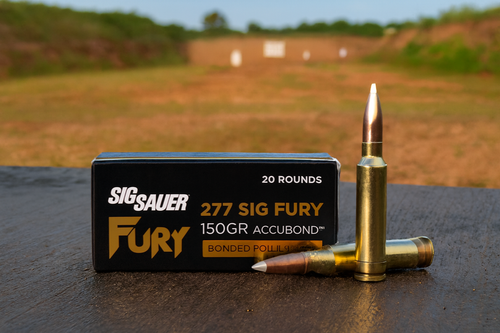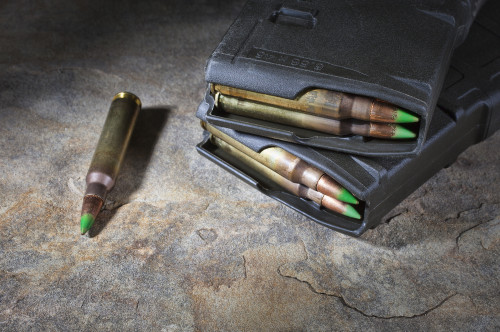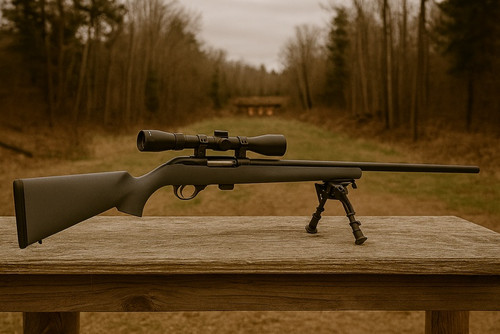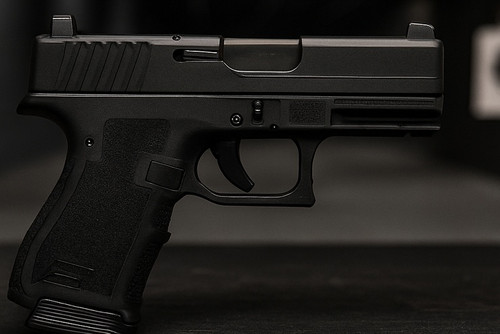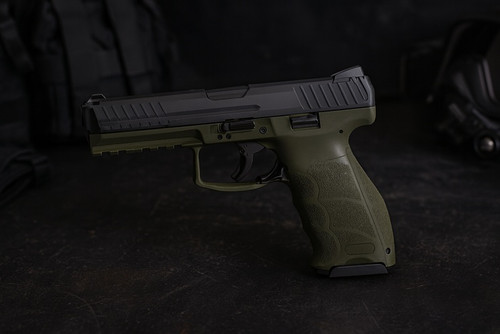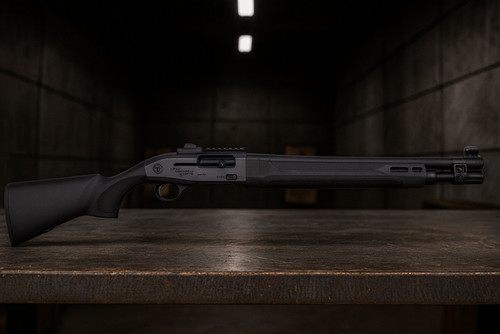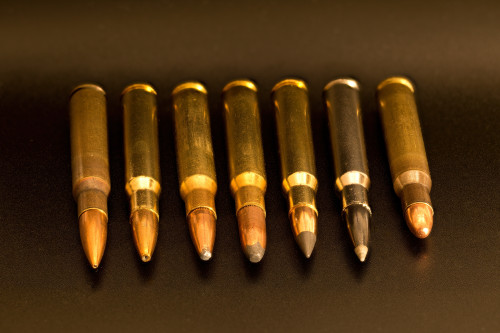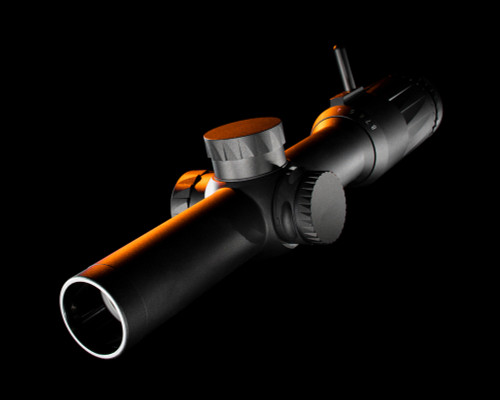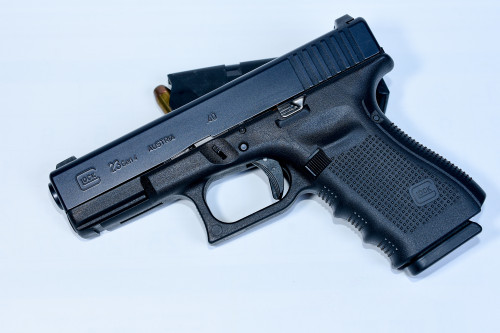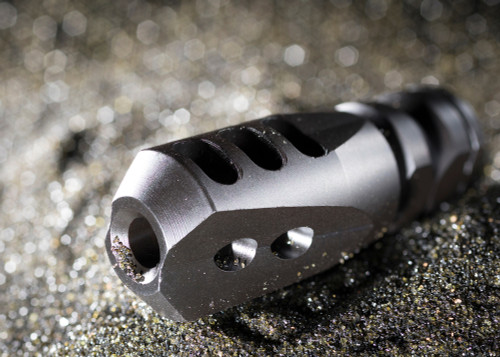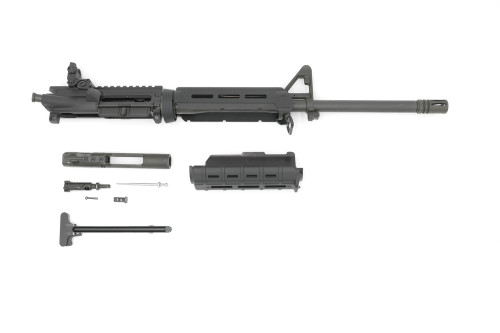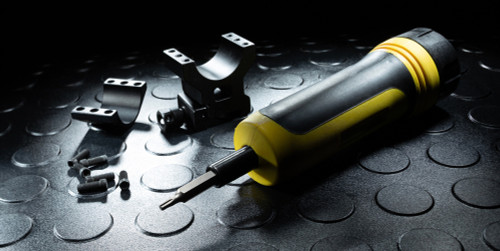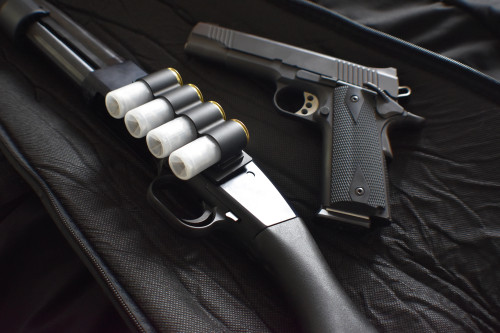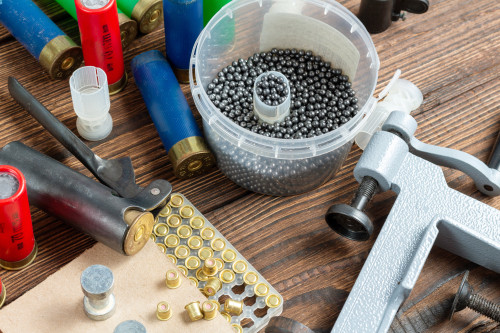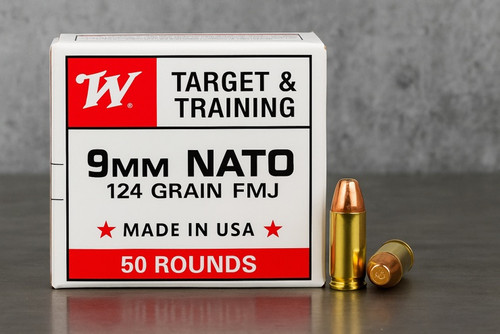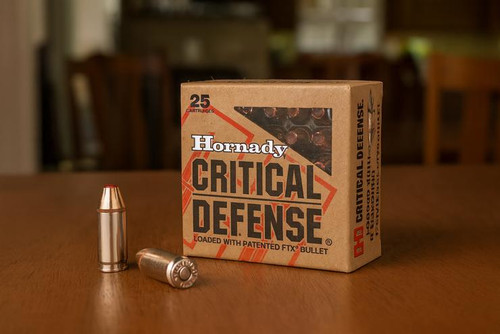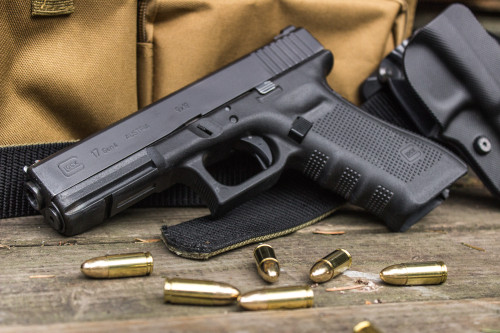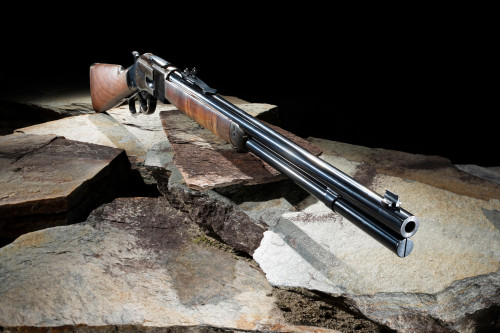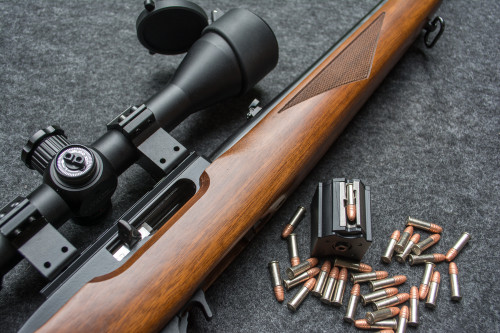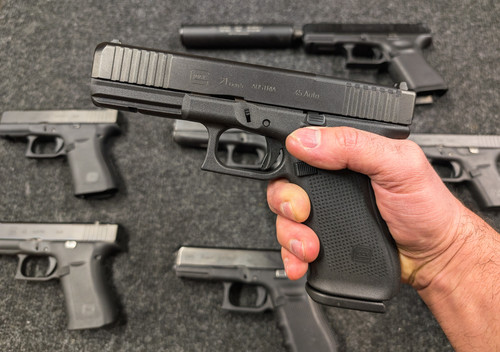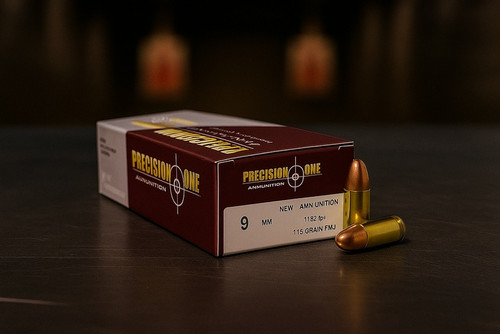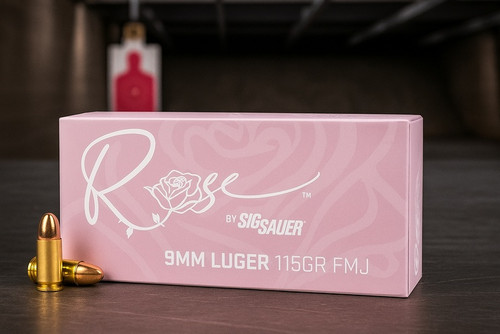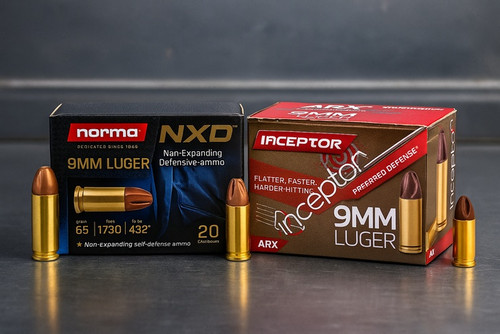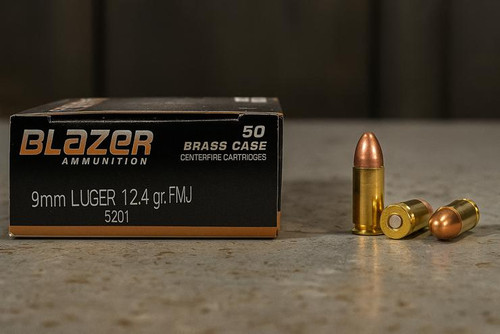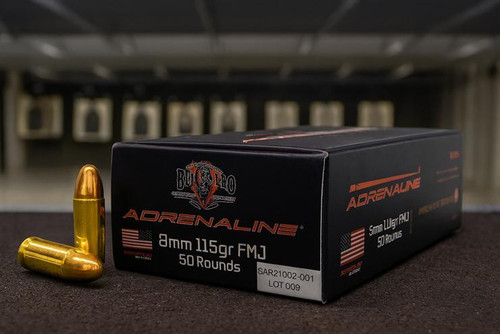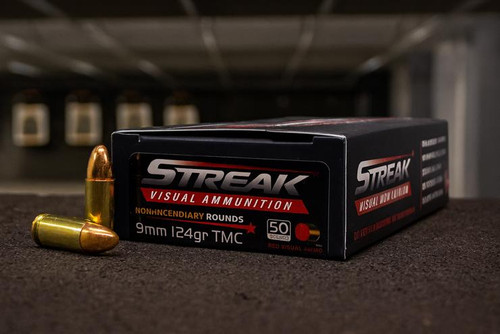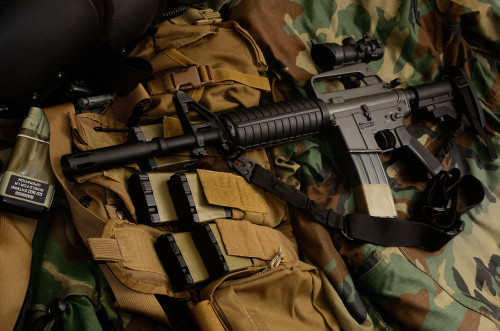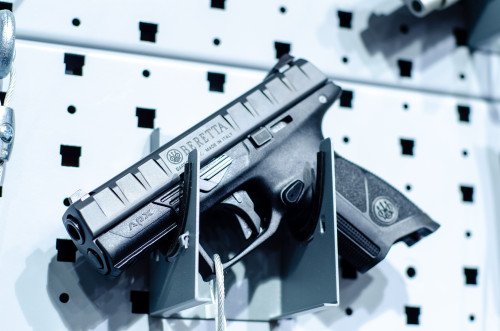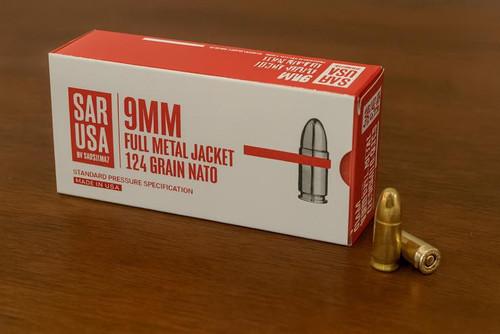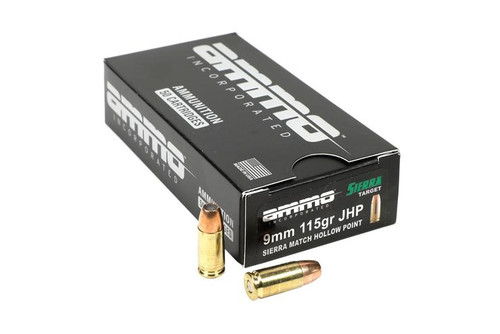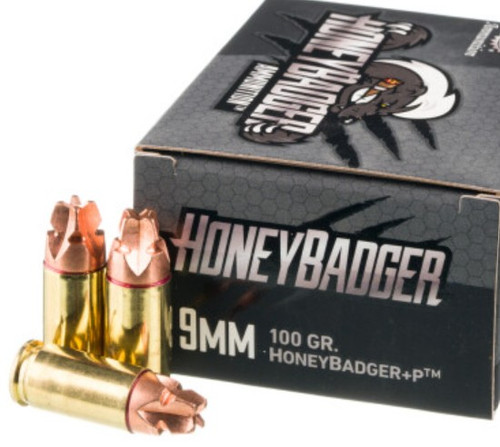Background on AAC Ammunition
American Ammunition Company (AAC) may be a relatively new name in the ammo world, but it’s backed by serious firepower. A house brand of Palmetto State Armory, AAC was created to meet the growing demand for affordable, American-made ammunition for training, recreational shooting, and defense. Manufactured in Columbia, South Carolina, AAC ammo is produced with the same high standards PSA is known for in its firearms, offering shooters a homegrown alternative to imported budget ammo.
AAC 9mm FMJ is designed specifically for high-volume shooting. With reloadable brass casings, non-corrosive Boxer primers, and clean-burning propellants, it delivers consistency and reliability in the most common handgun caliber in America. Whether you’re shooting through a new Glock, a worn-out Taurus, or a compact SIG, AAC ammo is built to feed smoothly, cycle reliably, and keep your training days productive.
While the brand doesn’t have decades of history like European manufacturers, AAC has already gained a strong reputation among budget-conscious shooters, instructors, and everyday gun owners looking to stock up without sacrificing function.
How AAC 9mm Compares to Competitors
AAC 9mm FMJ competes directly with American-made economy ammo like Blazer Brass (CCI), Federal Champion, Winchester White Box, and Remington Range. In that group, it stands out for its price point, often undercutting other brass cased offerings, while still maintaining reloadable brass and dependable ignition. It avoids the issues common with ultra cheap foreign imports like inconsistent powder charges or unreliable feeding.
Where AAC really earns points is in its value to performance ratio. Despite its low cost, the ammunition runs surprisingly clean and offers reliable cycling even in striker fired pistols known to be picky about ammo. It's a step up from imported steel cased ammo like Tula or Maxxtech, and a worthy contender against more established domestic brands.
AAC may not offer the ultra tight groups of premium loads, but in defensive drills, holster work, and mag dumps, it holds its own, which is exactly what it’s built for.
AAC 9mm Ammo Specifications
- Caliber: 9mm Luger
- Bullet Weight: 115 grain Full Metal Jacket (FMJ)
- Muzzle Velocity: ~1,150 fps
- Muzzle Energy: ~338 ft-lbs
- Case Type: Brass
- Primer Type: Boxer-primed, non-corrosive
- Reloadable: Yes
AAC’s FMJ load is standard-pressure, ideal for regular training without putting unnecessary wear on your firearm.
Performance at the Range
AAC 9mm FMJ is not match-grade, but it’s surprisingly consistent and dependable for what it costs.
- Group Sizes: 2.5–3″ at 15 yards and 4″ at 25 yards
- Shot Consistency: Moderate vertical spread, but stable enough for defensive drill work
- Platform Compatibility: Functions reliably in Glock, SIG, Smith & Wesson, Ruger, Springfield, and PSA Dagger platforms
- Training Suitability: Excellent for reload drills, rapid fire, malfunction clearing practice, and basic marksmanship work
Price and Value
- Price per box (50 rounds): $11–$13
- Price per case (1,000 rounds): $220–$250
- Cost per round: $0.22–$0.25
AAC is priced at the lower end of the brass cased spectrum, offering shooters a U.S. made option that’s typically cheaper than Federal or Winchester, and not far off from some steel case imports.
Best Uses for AAC 9mm FMJ
AAC’s budget friendly FMJ is best suited for:
- High-volume pistol training sessions
- Basic pistol courses and concealed carry qualification
- Indoor and outdoor range time
- Reload practice with affordable brass
- Drills requiring reliable function in stock or modified pistols
It’s not your top pick for competition or high accuracy applications, but it’s right at home on the training range or during weekend plinking sessions.
AAC 9mm: Reliability and Function
For low cost ammo, AAC punches above its weight when it comes to consistent operation.
- Clean Burn: Runs cleaner than expected — about average for brass-cased budget loads
- Excellent Ignition: No light strikes or misfires across 500+ rounds tested
- Smooth Cycling: Feeds well, including in compact and subcompact pistols
- Brass Quality: Uniform headstamps and primer pockets; reloads well for casual reloaders
Quick Pros and Cons
Pros
- One of the cheapest brass-cased 9mm options available
- Made in the USA -no import concerns or foreign QC issues
- Consistent feeding and ignition in most platforms
- Fully reloadable brass with clean primer crimps
Cons
- Not as clean-burning as higher-end brands like Norma or Speer
- Accuracy is adequate, not exceptional
- Packaging is basic -no sealed bags or waterproofing
How AAC 9mm Ammo Scores
| Category | Rating (out of 5) | Reason |
|---|---|---|
| Price | 5/5 | One of the most affordable U.S.-made brass loads |
| Reliability | 4.5/5 | Excellent reliability across common handguns |
| Accuracy | 3.5/5 | Serviceable for practice, but not competition-level |
| Cleanliness | 3.5/5 | Decent burn, but more residue than higher-tier FMJ |
| Packaging | 4/5 | Basic cardboard boxes, no weatherproofing |
| Reloadability | 4.5/5 | Quality brass with tight primer fit and minimal defects |
Gabriel’s Overall Rating:
Score: 4.2/5
Verdict: Buy This!
Rating Breakdown:
(Poor: 0–1.6), (Not Bad: 1.6–2.6), (Decent: 2.7–3.5), (Reasonable Purchase: 3.6–4.1), (Buy This!: 4.1–5.0)
Should You Buy AAC 9mm Ammo?
If you want to train with reliable brass ammo and avoid the pitfalls of cheap foreign imports, AAC 9mm FMJ is a no-brainer. It’s hard to beat in terms of dollar-to-performance ratio, and it performs far better than its bargain-bin price might suggest.
Shooters looking to stretch their range time, stockpile for classes, or keep their training consistent across multiple handguns will find AAC more than up to the task.
AAC 9mm Ammo: Real World Feedback
Positive Reports
- “Impressed for the price” – Many shooters on Palmetto State Armory’s review page consistently mention how surprised they are by the performance of AAC 9mm given its low cost. Users frequently highlight its reliable ignition, smooth feeding, and minimal stovepipes or failures to extract, even in high-round-count sessions.
- "Ran 500 rounds without a hiccup" – A number of reviewers have reported shooting hundreds of rounds in a single range session through Glock, SIG, and Smith & Wesson pistols without a single malfunction, showcasing AAC's solid QC for training use.
- "Clean enough for bulk ammo" – While not marketed as ultra-clean ammo, customers generally note that carbon buildup was minimal, especially compared to steel-cased alternatives and surplus imports like Maxxtech or Tula. Many rank its cleanliness on par with Blazer Brass or PMC Bronze.
Mixed Feedback
- “Harder primers than expected” – A few users have noted that AAC 9mm may not reliably ignite in pistols with reduced-power springs or competition triggers, especially in older or lightly modified firearms. This has been echoed by some competitive shooters running custom setups.
- “Brass is fine, but thin” – Some reloaders have mentioned that while AAC brass is reloadable, it may not hold up to as many reload cycles as premium brands like Norma or Federal. Several users mentioned splitting necks or loose primer pockets after the third or fourth reload.
- "Inconsistent grouping at 25 yards" – A small portion of shooters looking for tighter accuracy reported slightly wider shot groups beyond 20 yards, though this was typically in PCCs or longer-barreled pistols where match-grade expectations were higher than the round’s budget classification.
Negative Reports
- "Some ammo arrived dirty or scuffed" – There have been isolated complaints about bulk-packed boxes containing tarnished or oxidized cases, though function was rarely affected. This appears to be more of a cosmetic concern tied to bulk shipping methods.
- "Not as clean as premium options" – While not especially dirty, AAC’s powder burn is more comparable to Winchester White Box or Remington UMC than to ultra-clean options like Norma. Shooters using suppressors or running high-volume classes might prefer something cleaner.
- "Occasional velocity variance" – A few handloaders and chronograph users have noted variability in muzzle velocity, with some loads averaging 1,120 fps and others closer to 1,180 fps. This hasn’t caused reliability issues but may impact shot placement at longer ranges or for drills requiring repeatable recoil impulse.
Summary:
AAC 9mm FMJ delivers outstanding value for anyone seeking budget-friendly, brass-cased training ammo made in the U.S. While it doesn’t compete with match-grade options in terms of accuracy or burn cleanliness, its consistency, reliability, and low cost make it one of the best options in the budget training category.
Best Practices for Shooting AAC Ammo
- Function test before buying in bulk — though failures are rare
- Save the brass — it’s reloadable and decently durable
- Store indoors — no sealed packaging or corrosion protection
- Use for baseline training, not for precision work
- Pair with AAC defensive JHP for consistent recoil feel in training
Final Verdict on AAC 9mm Ammo
AAC 9mm FMJ isn’t flashy, but it delivers where it counts: reliability, affordability, and functional performance. Designed for bulk training and manufactured in the U.S. by the American Ammunition Company, Palmetto State Armory’s in-house brand, this ammo offers NATO spec 115 grain ballistics, brass casings, and non-corrosive Boxer primers that make it ideal for high volume shooting sessions and firearms training.
What stands out most is the balance of cost and performance. While it doesn’t have the polish or match-grade consistency of premium brands like Norma or Federal, AAC 9mm holds its own as a dependable workhorse round. It cycles cleanly in striker-fired and hammer fired pistols, maintains a stable point of impact, and avoids the common malfunctions often seen with ultra-budget steel cased imports.
For instructors, weekend shooters, or anyone stocking up for pistol classes, AAC 9mm provides one of the best price-per-performance ratios currently on the U.S. commercial market. The reloadable brass is an added value for handloaders, and real-world range reports show that it performs reliably across a wide range of platforms, from compact carry guns to full size duty pistols and pistol caliber carbines.
No, it’s not the cleanest or most precise ammo you’ll shoot, but that’s not what it’s built for. It’s built to run. If your training regimen calls for 1,000+ rounds a month, AAC 9mm is a smart, no frills choice that won’t let you down or break the bank.
Want a broader view before you commit? Read our full comparison of the Best 9mm Ammo for Training and Self-Defense to see alternatives and what performed best in reliability and cost-per-round tests.
Frequently Asked Questions (FAQs)
Is AAC 9mm FMJ good for self-defense?
No. Like all FMJ ammo, AAC 9mm is designed for target and training use. For defensive applications, look for AAC’s JHP or bonded hollow point options.
Is AAC ammo reloadable?
Yes. It uses Boxer-primed brass casings that are reloadable and hold up to multiple reloads.
Who manufactures AAC ammo?
AAC ammo is manufactured in South Carolina by American Ammunition Company, a subsidiary of Palmetto State Armory.
Is AAC as good as Federal or Winchester?
It’s close in function and reliability, though Federal may burn a little cleaner and Winchester might have a slight edge in consistency. But AAC is often cheaper — and still brass-cased and reloadable.
Will AAC 9mm work in compact pistols?
Yes. It functions well in compact models like the Glock 43X, SIG P365, and Springfield Hellcat, with no feed issues reported in standard testing.
Where can I buy AAC ammo?
Primarily through Palmetto State Armory, though some online retailers and gun shows carry it as well.



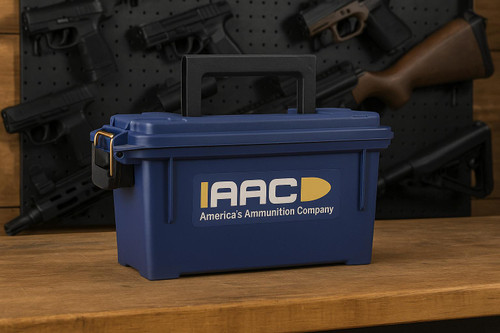
 Pro Armory Editorial Team
Pro Armory Editorial Team

